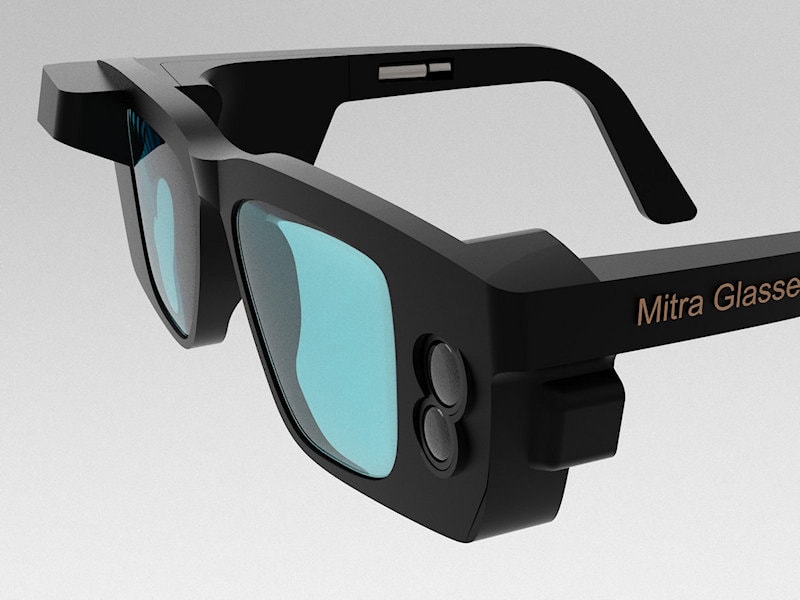Discover Advanced Assistive Instruments for People With Aesthetic Problems
The landscape of assistive technology for people with aesthetic disabilities is advancing rapidly, offering a range of ingenious devices that enhance autonomy and involvement. From smart glasses that flawlessly combine aesthetic input with auditory assistance to sophisticated navigating applications that redefine spatial understanding, these devices are improving opportunities.
Smart Glasses Innovations
Smart glasses represent a significant advancement in assistive modern technology for people with aesthetic problems. Equipped with sensing units and video cameras, smart glasses can capture real-time visual info, which is then processed and shared to the user through audio comments or haptic feelings.
Furthermore, improvements in expert system have even more improved the abilities of clever glasses. Artificial intelligence formulas can identify faces, read message, and identify things, making them vital devices for everyday tasks. Customers can obtain auditory signs that offer context concerning their atmosphere, fostering independence and self-confidence.
Furthermore, the ergonomic design and light-weight nature of numerous smart glasses make them ideal for long term usage, making sure comfort while boosting capability. As these gadgets proceed to develop, they hold the prospective to revolutionize the way individuals with aesthetic disabilities experience their day-to-days live, bridging the gap between accessibility and technology. The continuous r & d in this field assurance to increase the opportunities for wise glasses, making them a crucial element of contemporary assistive tools.
Navigating Apps and Devices
Various navigating apps and devices have actually become necessary sources for people with aesthetic problems, considerably enhancing their capability to pass through unfamiliar environments. These innovations leverage general practitioner performance, audio hints, and real-time data to provide customers with accurate navigating assistance.
One famous example is the Aira app, which attaches users to trained agents who can offer visual descriptions of environments and navigation assistance via an online video clip feed. This service enhances the user's spatial understanding and self-confidence while browsing. One more noteworthy tool is Seeing Eye GPS, which provides voice-guided navigation and points of rate of interest, allowing individuals to gain access to essential info concerning their surroundings.

As modern technology remains to advance, the growth of much more sophisticated navigation devices guarantees to further empower individuals with visual impairments, facilitating seamless movement and integration into diverse environments. Such technologies are instrumental in advertising a much more comprehensive society.
Braille Innovation Improvements
In recent times, innovations in Braille technology have considerably changed exactly how individuals with visual impairments gain access to info and involve with the world around them. The advancement of mobile Braille displays has actually changed reading by allowing individuals to attach wirelessly to computers, smart devices, and tablets. These gadgets transform message into Braille in real-time, making it possible for smooth interaction with digital web content.
Moreover, ingenious Braille printers have arised, enhancing the production of tactile products. Modern embossers are much faster and more reliable, enabling the quick creation of Braille files and educational materials. This efficiency reduces the moment and price associated with creating Braille resources, making them much more available to companies and schools.
Furthermore, the integration of Braille with other innovations, such as expert system and artificial intelligence, has actually opened brand-new methods for personalized discovering experiences. Voice acknowledgment and synthesis innovations can enhance Braille, offering an inclusive method to details circulation.
As the need for inclusive Resources education and work environment environments grows, these technological developments play an important function in equipping people with visual impairments, ensuring they have equivalent accessibility to information and opportunities in various facets of life.
Wearable Instruments for Independence
An expanding array of wearable tools is improving freedom for individuals with aesthetic problems, supplying ingenious solutions that boost navigation and daily living. Braille displays and notetakers. These tools make use of sophisticated modern technologies to offer real-time responses and assistance, advertising freedom in different settings

Wearable technology likewise consists of smartwatches that can be set with accessibility attributes, allowing individuals to receive notices, track their areas, or even ask for help with the touch of a switch. Some gadgets incorporate man-made knowledge to examine the atmosphere, offering sound summaries of neighboring things or people.
Voice-Activated Assistive Solutions
Leveraging voice-activated assistive solutions has actually changed the landscape of assistance for individuals with visual impairments, supplying hands-free communication and accessibility to a selection of tasks. These technologies make use of natural language handling and artificial knowledge to allow users to execute day-to-day activities with straightforward voice commands.

Additionally, recent developments in voice recognition precision have enhanced the user experience considerably, accommodating varied accents and speech patterns. This inclusivity ensures that more people can take advantage of these technologies, fostering a greater feeling of autonomy.
Conclusion
Finally, the development of advanced assistive tools significantly boosts the self-reliance and high quality of life for individuals with visual problems. Innovations such as smart glasses, navigation apps, Braille innovation, wearable tools, and voice-activated services jointly foster an even more inclusive atmosphere. These technologies empower customers to browse their environments with self-confidence and involve more totally with the globe, ultimately advertising greater availability and level playing fields for people dealing with aesthetic obstacles.
The landscape of assistive modern technology for people with aesthetic problems is advancing swiftly, providing an array of innovative devices that improve autonomy and engagement.Smart glasses stand for a considerable advancement in assistive innovation for people with aesthetic impairments. As these devices proceed to progress, they hold the possible to reinvent the way people with visual problems experience their day-to-day lives, linking the space in between ease of access and technology.In go now current years, improvements in Braille innovation have actually dramatically changed exactly how people with aesthetic disabilities gain access to details and engage with the world around them. These modern technologies equip users to navigate their environments with self-confidence and involve even more fully with the world, ultimately advertising greater ease of access and equal opportunities for individuals dealing with aesthetic challenges.